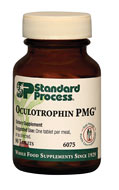Glaucoma

|
Plato |
Glaucoma, macular degeneration, and cataracts are three very common causes of vision loss - if they're left untreated. But many cases of these three sight-stealing conditions can be treated by natural means, often avoiding patent medicines and/or surgery entirely.
Glaucoma, one of the most common eye conditions of all, is eye condition with increased fluid pressure in the eyes and damages the eye’s optic nerve. The optic nerve is a bundle of more than 1 million nerve fibers. It connects the retina to the brain. A healthy optic nerve is necessary for good vision. If untreated or uncontrolled, glaucoma first causes peripheral vision loss and eventually can lead to blindness.
According to the American Academy of Ophthalmology (AAO), the most common type of glaucoma - called primary open-angle glaucoma - affects an estimated 2.2 million people in the United States, and that number is expected to increase to 3.3 million by 2020 as the U.S. population ages. Globally, glaucoma is the second leading cause of blindness (behind cataracts), according to the World Health Organization.
Primary open-angle glaucoma is the most common type of glaucoma. Several large studies have shown that eye pressure is a major risk factor for optic nerve damage. In the front of the eye is a space called the anterior chamber. In the healthy eye, a clear fluid circulates inside the front portion of your eye. To maintain a constant healthy eye pressure, your eye continually produces a small amount of fluid while an equal amount of this fluid flows out of your eye. A clear fluid flows continuously in and out of the chamber and nourishes nearby tissues.
The fluid leaves the chamber at the open angle where the cornea and iris meet. When the fluid reaches the angle, it flows through a spongy meshwork, like a drain, and leaves the eye. If you have glaucoma, fluid does not flow out of the eye properly. Fluid pressure in the eye builds up and, over time, causes damage to the optic nerve fibers. In open-angle glaucoma, even though the drainage angle is "open", the fluid passes too slowly through the meshwork drain. Since the fluid builds up, the pressure inside the eye rises to a level that may damage the optic nerve. When the optic nerve is damaged from increased pressure, open-angle glaucoma-and vision loss - may result. That’s why controlling pressure inside the eye is important.
Another risk factor for optic nerve damage relates to blood pressure and chronic kidney disease. Thus, it is important to also make sure that your blood pressure is at a proper level for your body and your kidneys are under control.
- Why glaucoma often is called the "silent thief of sight”
- What warning signs indicate glaucoma
- In what case danger of being blinded would lessen
- What the right tests need to be done for glaucoma
- Why glaucoma is not isolated problem to the eye only











